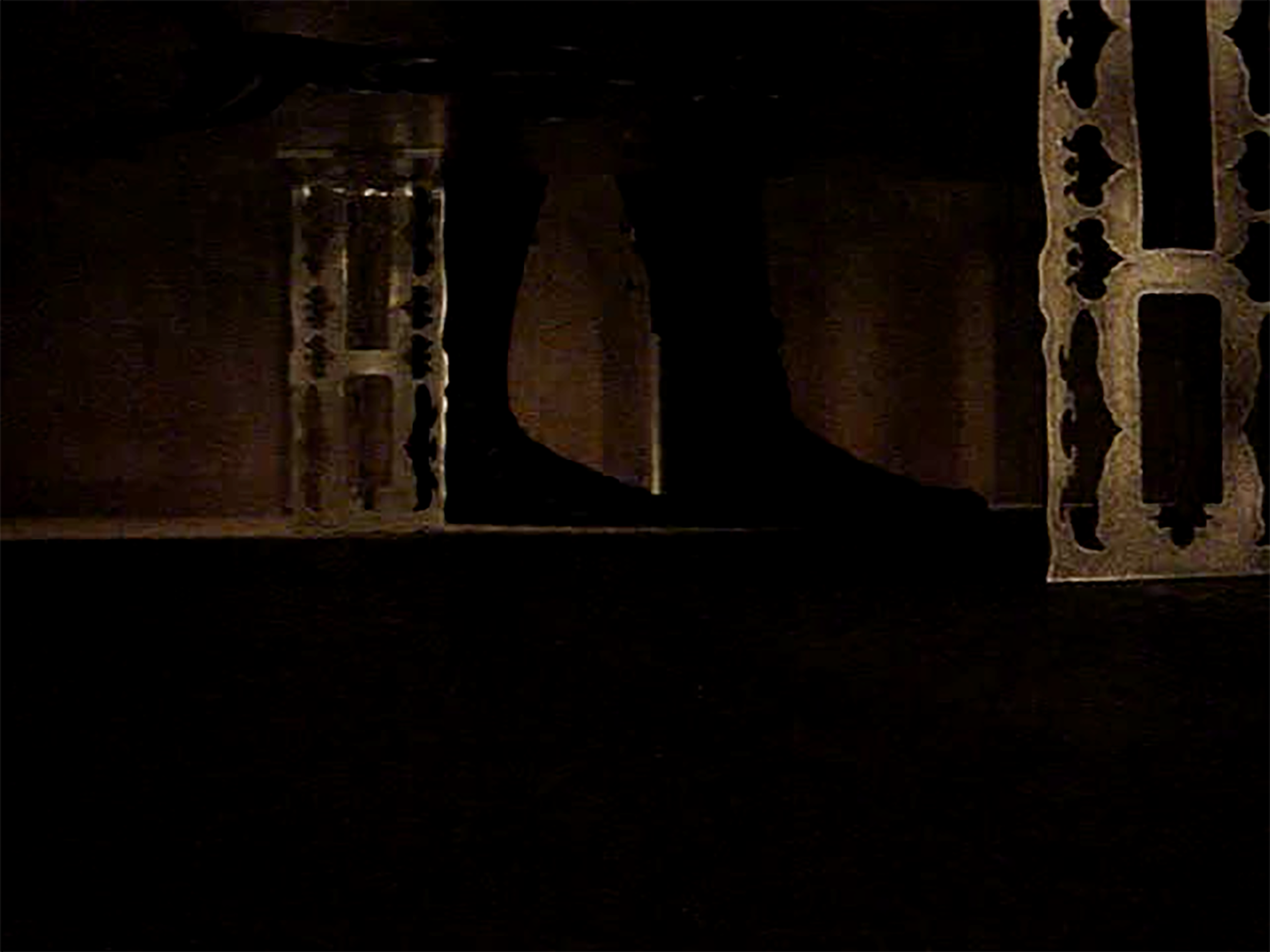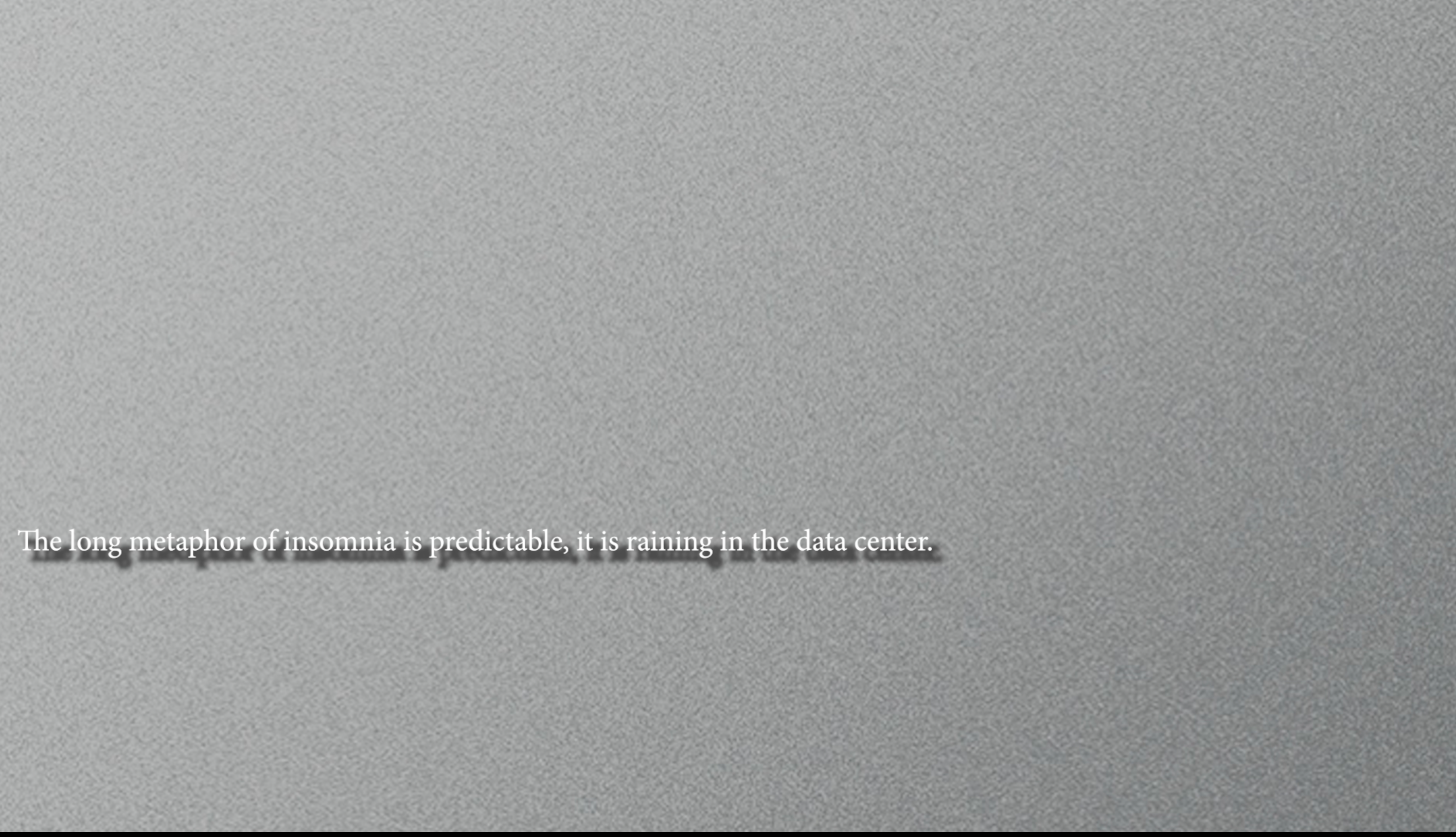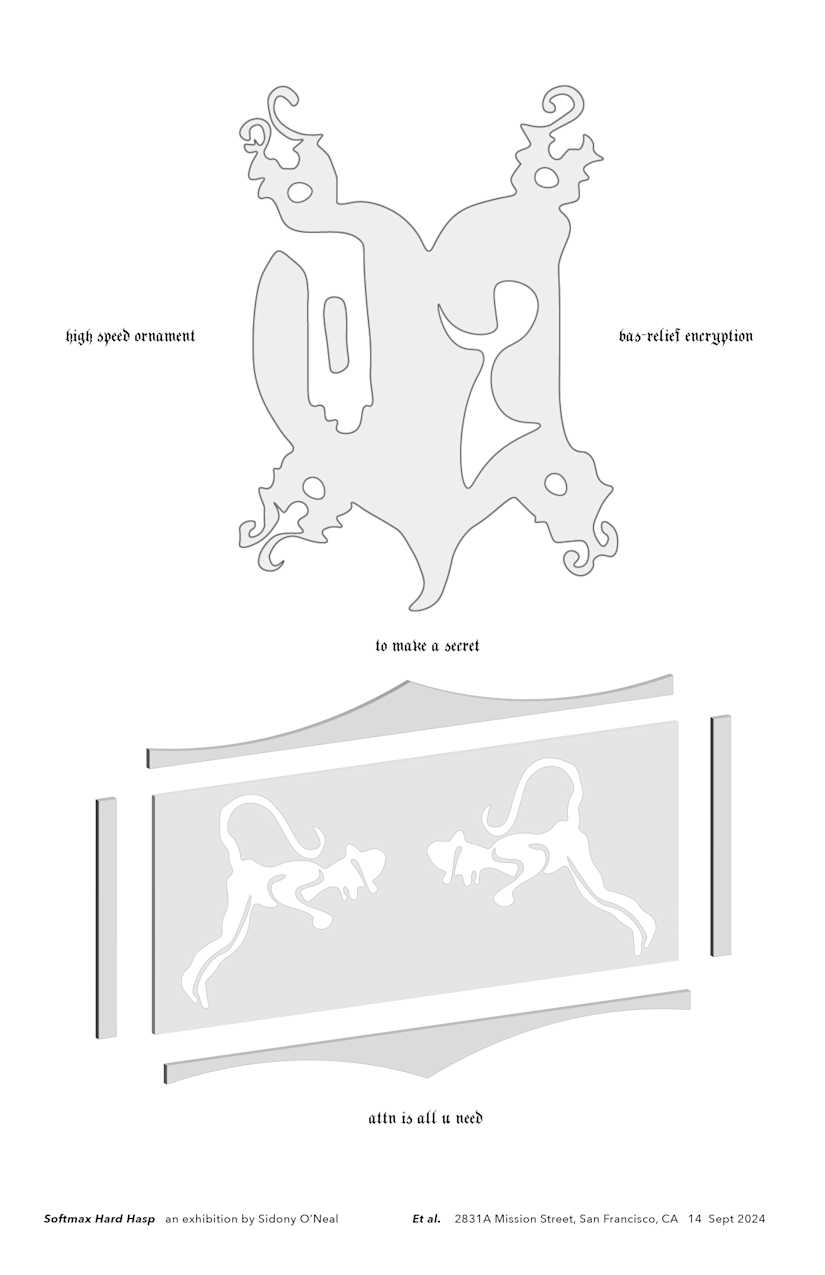
On View: August 5
The Video Viewing Room series presents recent video works and archival recordings. This online initiative revives The Kitchen's longstanding Video Viewing Room—a dedicated space within our buildings from 1975 through the early 1990s.
Artist Sidony O’Neal’s research-based practice takes shape across a diverse range of forms, from sculpture and drawing to writing and video essays. For this Video Viewing Room, O’Neal uses the platform as a window into the interconnected aspects of their thinking and making and as an opportunity to build on investigative threads present in bodies of work produced between 2022–2024. The presentation brings together a new video work, an introductory text by the artist, and a selection of related media.
Sidony O’Neal: To make a secret, attention is all you need is organized by Alison Burstein, former Curator, The Kitchen.




This video brings together two excerpted texts, a sculpture, and a performer. First the texts. One is my own translated excerpts from the short fiction work Funes, el memorioso by Jorge Luis Borges (1942); the second is snippets from the machine learning research paper “Attention Is All You Need” (2017). . Published 75 years apart, both texts allegorise and demonstrate techniques in memory management, encryption, and resource optimisation. Both texts reflect on the accumulation of hidden steps required to reason acceptably in time. Both texts review some stakes for optimising computational abstraction.
Published in 1942, Funes, el memorioso functions as a eulogy for a 19-year-old Uruguayan priest who experiences full presence and memory without management or compression—that is RAW memory—and thus remains secreted away from the overwhelming redundancy of the world. Incapable (or uninterested) in performing the fundamental abstractions of human consciousness expected by interlocutors, Funes declares “My memory, sir, is a landfill.” The cuento is of course expanded through Borges’ nuanced treatment of the Uruguayan and Argentinian social and political contexts from which it was conceived. Ficciones is Borges’s collection published in 1944 containing Funes, and it remains a bare entryway to the study of 20th century literatures as well as the applied philosophy of mathematics. Thoroughly addressing and innovating through genre, though not always gender, the Borgesian register rings dutiful with the sort of IYKYK refs, algorithmically strolled corpus, and emergency brevity that would not be out of place communicating on today’s internet.
“Attention is all you need” is a machine translation research paper published by a team of researchers—Ashish Vaswani, Noam Shazeer, Niki Parmar, Jakob Uszkoreit, Llion Jones, Aidan N. Gomez, Lukasz Kaiser, Illia Polosukhin—many of whom worked at Google—in 2017. It contains a succinct and playful proposal for a new architecture in machine translation that eschews the redundancy and inefficiencies from previous approaches. The paper quickly found application across several fields and notably formed the foundation for the current cultural shift (and mass investment) in the proprietary advancement of contemporary Natural Language Processing (NLP) products—including neural networks, machine learning modules, and their related areas of research. The paper motivates and demonstrates a layered “transformer”/translation structure that uses a multi-headed form of “self-attention” to exercise priority in learning. Only eight years after being published, “Attention is all you need” was recently counted among the ten most-cited scientific works of the 21st century. Its methods remain integral to contemporary large language models that form the basis for products such as ChatGPT and BERT.
Together, both texts provide a glimpse into some of the research space and themes present in my 2023 exhibition ,The Pudding Butcher, which brought together works and research undertaken during my time as a Hodder Fellow at Princeton University (2022-2023). These two texts take up the stuff of machine-like human and human-like machine relations. They thus invoke ability/disability and neurodivergence as well as computation and proprioception–topics complicating the desire for innovative machine technologies that can truly engage the plurality of computing bodies navigating an exceedingly detailed world. Putting these texts in touch again allows me to revisit and extend my investigations in that body of work, as well as further my engagement with a sculpture that I made nearly a year after completing the fellowship.
To make a secret, attention is all you need is a short film that concatenates and softly misreads both texts (Funes and “Attention”) by making them narrate the world of a sculpture I showed in 2024: A secret is not a substance (Hyperbolic Settee). The Hyperbolic Settee appears in the video, unfixed, in relation with dancer, performer, choreographer, and curator keyon gaskin, who embodies and exploits the sculpture’s layered formalisms. I am interested in the increased tendency toward self-surveillance/auto-attention that engagement with NLP products brings. An unattainable desire for lossless computational memory is in tension with anxieties about reconstructive (sur)veillance, search history, and self-snitching, which often have legal and material impacts. Both performer and sculpture treat the attention function as at once modular and redundant in the given environment/field:
Here, the conditions for the use of encryption technology are reduced to the basic human desire to keep a secret. The desire to maintain a secret first requires the production of said secret. We set out to unpack what it might mean to make a secret in an unfamiliar environment.
— Sidony O’Neal
BIO
Sidony O’Neal is an artist and writer working from interdisciplinary research in the culture and philosophy of pre-to-post machine computing. O’Neal’s practice especially treats conceptual art and mathematics as related forms of industrial culture that have shaped many relationships through objects, labour, and technology over time. Recent solo exhibitions include Et al. (Softmax Hard Hasp), SF; Lewis Center for the Arts (, The Pudding Butcher), Princeton University; Dracula’s Revenge (NOT TALKING UNTIL BAD COMPANY JOINS), NY; Portland Institute for Contemporary Art (Enchiridion: Aisle, Spline, Resort), Portland, OR; and Veronica (AuguRing), Seattle, WA. Duo and group exhibitions include Third Born (Continuous Dimensional Thorax), CDMX; ICA at Maine College of Art and Design (ENTER:) and SculptureCenter (In Practice: Total Disbelief), NY. O’Neal is the recipient of awards and fellowships including the Oregon Arts Commission's Joan Shipley Award, a Hodder Fellowship at the Lewis Center for the Arts, Princeton University, and a Hallie Ford Fellowship.